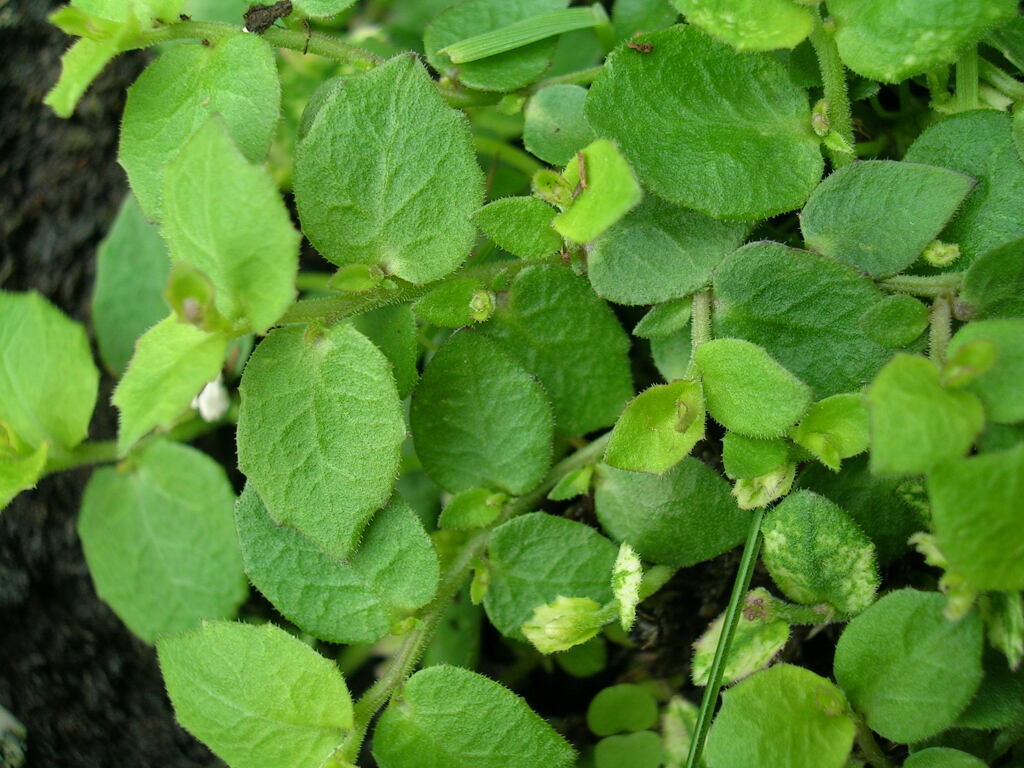Lobelia pedunculata
R.Br. Matted PratiaProstrate to decumbent, glabrous to minutely pubescent mat-forming perennial; stems rooting at nodes. Leaves ovate to orbicular, 2–13 mm long, 1.5–10 mm wide, sometimes reddish-purple, margins toothed, base obtuse; petiole 0–1.5 mm long. Flowers irregularly spaced, male, female and bisexual flowers superficially similar; pedicels 3–100 mm long, glabrous to minutely pubescent. Calyx-lobes 0.8–3 mm long, entire or toothed; corolla obviously to weakly zygomorphic, 4–10 mm long, white, blue or mauve; lobes subequal, elliptic to oblanceolate-obovate, 2–6 mm long, 0.5–3 mm wide, tube 2–4 mm long, split to within c. 0.7 mm or less of base, glabrous or with fine retrorse hairs internally towards base; filaments 1.5–3 mm long, anther tube c. 1–1.5 mm long in male and bisexual flowers, c. 0.7–1 mm long in females, seta of 2 lower anthers 0.3–0.5 mm long. Fruit c. ellipsoid to globose, slightly compressed, 3–8 mm long; seeds slightly asymmetrical, ellipsoid, compressed, 0.5–0.85 mm long, light brown, reticulate, with elongate alveoles. Flowers and fruits all year.
Wim, GleP, VVP, VRiv, GipP, OtP, WaP, Gold, CVU, GGr, DunT, NIS, EGL, EGU, HSF, HNF, OtR, Strz, MonT, HFE, VAlp. Also SA, Qld, NSW, ACT, Tas. Occurring from sea-level to high altitudes in moist forests and woodlands, riparian situations, swamps, bogs and other seasonally moist areas.
A highly variable species with respect to leaf density, leaf size, indumentum, flower size and corolla colour. An alpine form, possibly warranting formal recognition has flowers almost regularly 5-lobed and usually distinctly patterned by the darker, bluish veins. Plants previously treated as a 'south-western variant' of L. pedunculata, with colourful, distinctly fan-shaped corollas have recently been named L. pachytricha.
Albrecht, D.E.; Walsh, N.G. (1999). Campanulaceae. In: Walsh, N.G.; Entwisle, T.J., Flora of Victoria Vol. 4, Cornaceae to Asteraceae, pp. 553–553. Inkata Press, Melbourne.
 Spinning
Spinning


